“A commonplace woman of the demimonde, as naked as can be, shamelessly lolls between two dandies dressed to the teeth. These latter look like schoolboys on a holiday, perpetrating an outrage to play the man…this is a young man’s practical joke- a shameful, open sore.” – Gardner
“I myself shouldn’t like to meet this young man…I should be obliged to tell him I don’t understand anything about his paintings, and I don’t want to be disagreeable with him.” – Gustave Courbet

To practitioners of the debased idealistic formula that ruled painting in the mid-nineteenth century, "realism" was the dirty word that "abstraction" became a hundred years later. Manet's puzzling picnic scene which might have been more reasonably criticized for several ambiguities in conception, such as how far away was the bather in the rear?, was vilified as "realistic"..
Edouard Manet was the reluctant revolutionary. He strove only for official recognition; he never thought of himself as making a protest, overthrowing the art of the past, or creating a new order: yet that is exactly what he did. …
“Previous to the Impressionist revolution in art, nude figures were indeed quite a staple of paintings since the Renaissance. But these nude figures had historically been separated from their contemporary milieu by way of representation as mythological figures. It was one thing to present the goddess Athena naked, it’s another to present the girl who cleans houses for the rich naked. The problem was compounded for Manet by the fact that Luncheon on the Grass has all the hallmarks of one of those paintings that feature naked girls as spritely wood nymphs. The setting is a forest glen with a half-clothed woman dipping her goodies in a stream. It doesn’t take a massively imaginative person to displace the modern day couples with mythological figures. In a sense, Edouard Manet not only seemed to be purposely creating scandal, but also to be thumbing his nose at tradition.” ( Timothy Sexton )
Even before it met , Manet didn’t have a chance with the 1863 jury. He had always been a little troublesome. As a student he had been unwilling to follow without question the teaching of his master, a standard academic success of much talent and little imagination named Thomas Couture. Nevertheless, Manet had received an honorable mention in the Salon of 1861, where a picture of his parent, always a safe subject, and another of a Spanish guitar player had attracted favorable public attention. Perhaps this small success ruffled the pedants who remembered his defections as a student.
Manet also made the mistake of exhibiting a group of paintings just before the opening of the Salon, with an adventurous dealer named Martinet. It was a rash move, even an impertinent one, for a painter in a precarious spot, and the critics were violently hostile in a way to justify a suspicion that they enjoyed the opportunity to pounce. Finally, some of the jurors no doubt disliked Manet personally; he could be standoffish to the point of snobbishness, and was temperamentally incapable of currying favor. For whatever combination of reasons, the Salon jury was ready to cut Manet down to what they thought size, and his three submissions were thrown out.
“It’s a little difficult for us today to really grasp the volatile nature of the Parisian art world in the turbulent times of the 1860s. As painters today, we have no dominant art institution to compare to the French Academie des Beaux-arts, nor single, overriding “art contest” to compare with the Academy’s annual Salons. France during this period had something on the order of 5,000 writers and critics covering the art scene while there were 12,000 working artists in Paris alone. If that sounds a bit top-heavy from a journalistic point of view, it was. As they say, everyone was a critic. France was drunk with art, which would explain why so much of it was simply bad art.” ( Jim Lane )
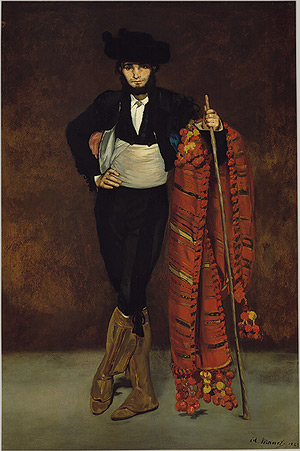
---Manet continued to pose characters as bullfighters but not engage them physically in the actual fight. As seen in Young Man in the Costume of a Majo (1863), Manet depicts his brother posing as a stagnate majo. Wilson-Bareau in Manet and Spain refers to Manet’s act of using Spanish costume as “hispancizing Frenchmen” ---
A good, selective weeding by a fair jury might have been just what the Salon’s needed, since only a fraction of the several thousand paintings in a typical Salon were anything more than proficient exercises ; the technical level of Salon painting was high, if pointless. But the objections of the rejected painters in 1863 were clamorous, and in a country where the arts were so closely bound to gove
nt, the uproar amounted to more than a bit of picturesque unpleasantness in the studios.Napoleon III summoned his superintendent of Fine Arts- Count Nieuwerkerke , an incorruptible pharisee, and not only told him that something had to be done, but told him what to do. An auxiliary Salon was to be held in conjunction with the regular one; the rejected pictures were to be hung, and the public was to judge for itself whether the jury was right or wrong.
The flaw in this situation was that the public never made a judgement of its own when it had an official one to follow. The Emperor himself was not exactly an aesthetic radical. His taste is well enough exemplified in the painting he chose to purchase from the Salon that year, a “Birth of Venus” by the established academic painter Cabanel. The “Salon des Refusés” , so far as has been reconstructed from its rather sketchy catalogue, appears to have been only a larger and spottier Salon. Several artists were represented in both exhibitions , and the bulk of the pictures that were refused were refused, no doubt, for the legitimate reason that they were inferior productions in the standard manner.
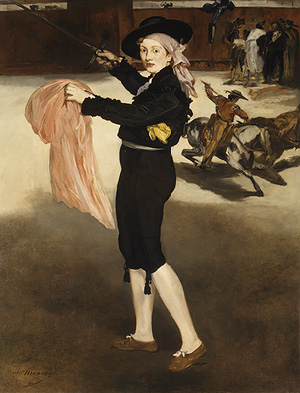
" The character’s lack of physical interaction with the bullfighting scene make the bullfight appear more like a Spanish act rather than an authentic bullfight. The absence of jabs, jumps, and lunges by the characters in the actual fight suggest acting rather than authenticity. For example, in his 1862, Mme. V… in the Costume of an Espada, Manet portrayed the French model, Mademoiselle Victorine, in Spanish bullfighting garments. Juliet Wilson-Bareau notes that Mademoiselle Victorine is “posed to look Spanish” (Manet and Spain 220) rather than be Spanish. Trying to brandish her sword in the air, Mademoiselle Victorine poses awkwardly, while a bull charges at a “picador” in the opposite background. By assuming a heroic pose and not interacting with the bullfight, Mme. Victorine looks more like an actress advertising a spectacle than engaging in a murder."
The idea that the “Salon des Refusés” was the declaration of independence for a group of revolutionary painters; that it was studded through with works of an originality to which the jury had been blind, is attractive, but incorrect. The “Salon des Refusés” has tremendous importance as the first official hint that official taste might be questioned , but as proof of the jury’s fallibility it seemed, at the time, to have backfired. Whistler had a painting in it; Pissarro had three. But the handful of other names that have become famous were represented by early or minor works that only an oracle could have singled out- with the exception of the three canvases by Manet.
“But the show became a laughing stock. The problem was that many of the works “refused” by the Academy Salon were quite bad and had been justifiably excluded. However here too, amongst these inferior pieces, was Monet’sImpression: Sunrise, Manet’s Le Dejeuner sur ‘Herbe (Luncheon in the Grass), and a strange looking portrait of a young lady in white (The White Girl, Symphony in White, No. 1) by some American upstart by the name of James McNeill Whistler. A guard even had to be posted by Manet’s work to keep the outraged public from attacking the scandalous painting. For the most part, however, they just laughed–long, hard, and boisterously. The show did change things though. Paintings were sold. And art dealers took notice. They might look funny, some of them, but there was money to be made from some of them. In short, the battle may have been lost, but the rebels would survive to fight another day.” ( Jim Lane )
Two of Manet’s exhibited paintings, ” Young Man in the Costume of a Majo” and Mlle V. in the Costume of an Espada” were of the type that had struck the critics as barbarous in his show at Martinet’s, with their strong colors dashed against grays and blacks. But the real shocker was a painting called, in the catalogue, simply “Le Bain” , which soon took on the title it still carries “Le Dejeuner sur l’Herbe” . Basically , “Le Dejeuner” was a type of demonstration painting familiar in the Salon: combining a nude, a section of still life, and some landscape, it permitted an artist to display his skill in a set piece.
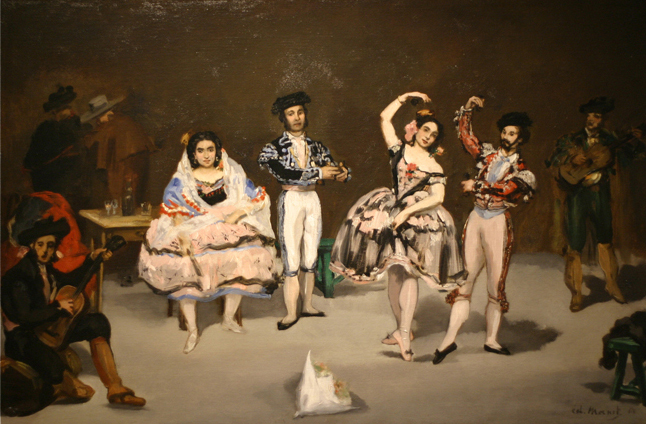
Manet. The Spanish Dancers 1862. The Spanish Ballet was compared with Goya "gone native in the middle of the Mexican pampas"
The trouble was that Manet, a pure painter, violated the approved methods of representation, and thus offended the academicians. Additionally, he offended them, and the public too, by supplying none of the clues, facial expressions and the like, that Salon painters ordinarily planted to tell people how they were expected to respond to a picture.
The main reason “Le Dejeuner” offended so deeply was that it puzzled, and by puzzling it threatened. The Salon audience was still raw, the early generations of the mass audience creaed after the French revolution with the shift from aristocratic to bourgeois patronage. Eager to feel cultured, the audience gave its favor to the kind of painting that took it by the hand and pointed out which one of several standard conventional responses the cultured person was expected to feel.
The result was that the more obvious the indicated response- the more vulgar in themost general sense of the word- the more successful a picture was likely to be. The most popular Salon paintings were essentially waxwork displays created to please an audience with no interest in the aesthetics of painting- with in fact, no real consciousness of aesthetics- who expected to be offered pictures to be read much as one would read a story, a tract, or a description.
But “Le Dejeuner” left you hanging. It offered no clues; it was and is a painting that makes sense only as an aesthetic statement. It proposes no moral or social lesson, and whatever anecdotal content it has is not only very slight but is presented with a total absence of comment. What was supposed to be going on, and what were you supposed to think of it? What for that matter did the artist think of it? Manet seemed to have set the stage and peopled it with actors without supplying a script. Even the original title, which could usually be depended on as a clincher in case of doubt, was noncommittal-“Le Bain” . The only conclusion was that this fellow Manet was indifferent to moral values, a coarse grained man devoid of idealism, and that his picture, if indeed not conceived as a piece of insolence, was at least indecent.
To grant the persecutors of “Le Dejeuner” their full due, we must admit that a picture which remains a little ambiguous even today, required a major adjustment in ways of seeing one hundred fifty years ago. The flat, uncued presentation of an unexpected subject combining the nude girl who regards us with so matter-of-fact air , as if she were not part of the picture but were in a room with us, alongside the clothed young men who are so casual about it all, who even seem hardly aware of her presence; this makes for a curious picture and in some ways a disrupted one.
Manet breaks with convention by:
No chiaroscuro
No linear perspective
Not a classic landscape
Figures do not seem to relate to one another
Thick and full brush strokes that call attention to the act of painting
Vast planes of color
Portion of the painting left unfinished
ADDENDUM:
“The outrage at Manet’s painting stems from the still-current tradition of hypocrisy. Despite the fact that it was quite obvious that real life nude models were the inspiration for all those mythological creatures and
Greek and Roman goddesses cavorting around naked in so many paintings, it was acceptable because they weren’t really naked women. Manet’s real crime, therefore, wasn’t in presenting all the naughty bits that had, after all, been on display in paintings for centuries, but rather that he was contributing to a blurring of the distinction between the real and the artifice. The fantasy nude women in paintings was, with just a few thousand brush strokes by one man, replaced by the ordinary. Oddly, a fully nude Greek goddess complete with exposed breasts and hairless pubes was preferable to the side view of one breast and no genitalia on the woman in Manet’s painting.
What was at the center of the scandal, whether the critics wanted to admit it or not, was that Manet’s nudity was attacked because it was ugly and degenerate. Strange, that. It was less degenerate to show a fully mature woman with no pubic hair than to cover up the crotch of another woman. The depth of the attack and the revelation that all of this was pure hypocrisy can be illustrated by virtue of the fact that some critics went so far as to disparage the body of the model in Manet’s painting. Oddly enough, one described her as not having a good figure.” ( Sexton )


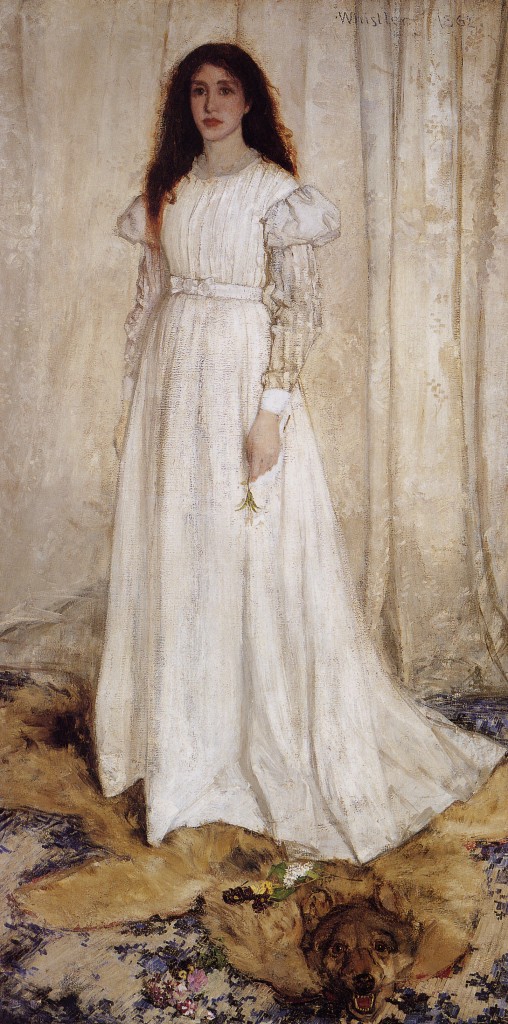
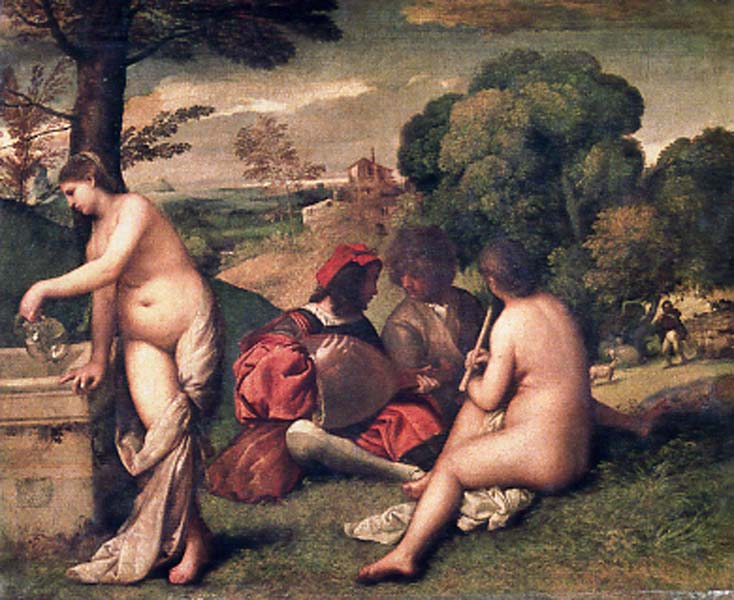



 COMMENTS
COMMENTS
RE: BOHEMIAN RHAPSODY:DON’T SIT ON THE GRASS
Very nice comments. Thank you for your thoughts.
Dave S
thanks for the visit